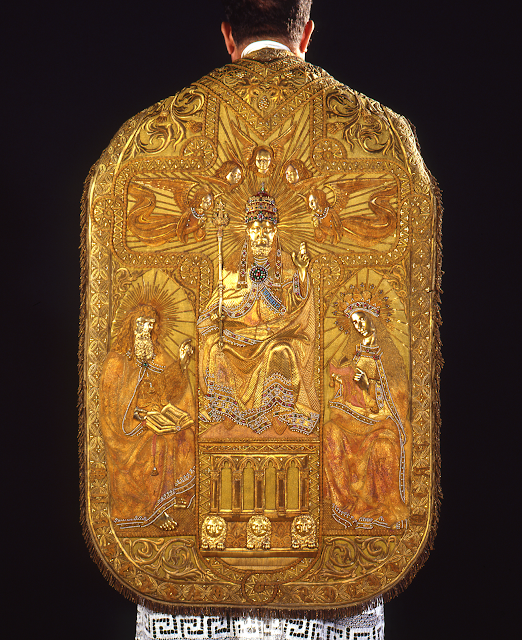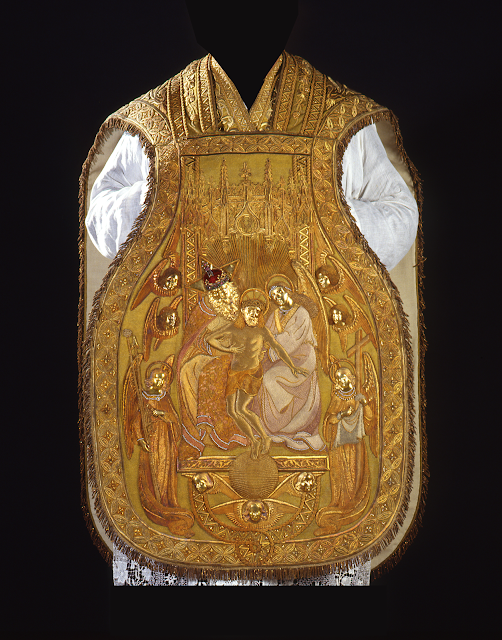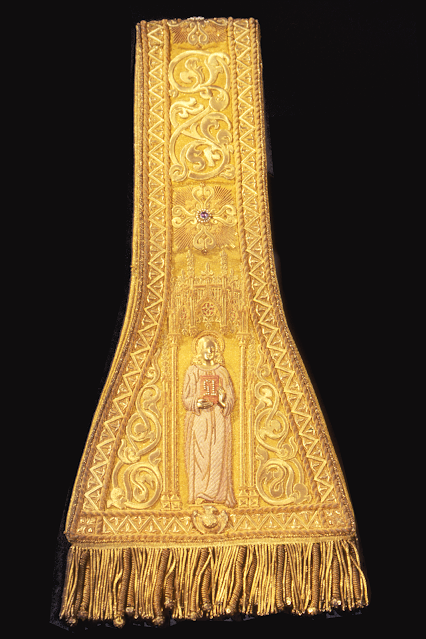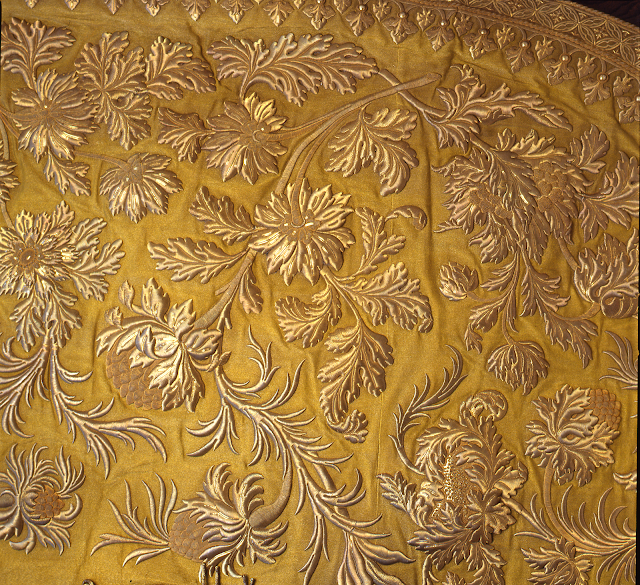Designed in 1841 by Pierre Bossan, this chasuble was presented to Cardinal be Bonald upon his elevation to that high office -- and as a point of interest for our readers, Bossan was also the designer responsible for the famous Marian chasuble of the Cure d'Ars, St. John Marie Vianney. This richly ornamented gold chasuble includes a central image of God the Father wearing tiara and mantle, seated on a throne supported by three lions, surrounded above by angels, holding his one hand in blessing while the other holds a royal sceptre. To either side of the figure of God the Father are two other figures; one is the Virgin Mary, crowned and holding a Book of Hours; the second is St. John the Baptist -- the patron saint of both the archdiocese and the primatial cathedral -- who holds the text of the Old Testament in one hand, and points toward the Father and the new covenant with the other.
The front of the chasuble shows yet another scene, once again depicting God the Father this time holding the dead Christ, assisted by an archangel. Surrounding these three central figures are six angels, the two in the foreground holding instruments of the Passion of Christ. Beneath are seen three cherubs.
The maniple and stole of the set contain images of the Four Evangelists.
As part of this set is also a cope of which we can provide a few details. On the hood is shown an image of the Lamb of God, the Agnus Dei, with an emerald studded Cross on a staff emerging behind and two adoring angels on either side.
On the front orphreys of the cope we find two former bishops of Lyon, St. Irenaeus and St. Pothinus.
Regrettably the only image I can provide of the entire cope is this one not in colour:
One element of this set we haven't spoken about yet is the raised embroidery work, shown well here in this image taken from the main body of the cope. These follow a naturalistic motif, showing flowers, vines and leaves intertwined with one another. In this regard, this particular set shows a design which combines the more common design trend of vestment work for the centuries preceding the 19th century, with its focus on naturalistic motifs, and the transition in the mid 19th century toward a revival of figurative representations in vestment work -- something more common from the 16th century and prior. This set also marks the trend seen in the nineteenth century toward very heavy embroideries on vestment work, particularly French vestment works -- by comparison with the much more delicate embroideries of the 17th and 18th centuries.
Many thanks to Bernard Berthod for helping with most of these images.



















